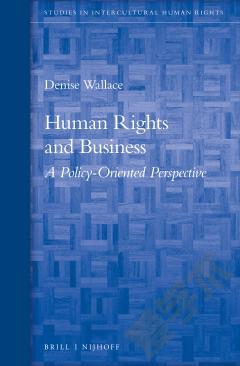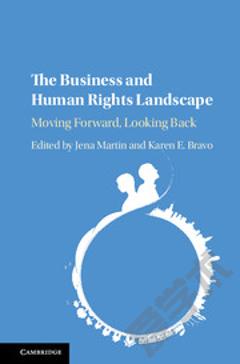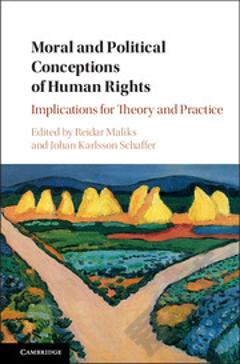Human Rights and Business —— A Policy-Oriented Perspective
----- 人权与商业:政策性视角
Excerpt of table of contents: Abstract Acknowledgments Abbreviations CHAPTER 1 The New Haven School and the Human Rights and Business Debate I. Why the New Haven School? A. What is Law? B. Criticisms of the New Haven School II. The Challenges in Applying the New Haven School to the Human Rights and Business Debate III. What is International Law? IV. Conclusion CHAPTER 2 Delimitation of the Problem I. Tools of the Trade A. Clarification of Observational Standpoint B. The Observational Standpoint of Key Decision Makers (Problem Solvers) in The Human Rights and Business Debate II. Delimitation of the Problem Under a Policy-Oriented Jurisprudence Analysis III. Geopolitical Drivers in the Human Rights and Business Debate A. Transnational Corporations: Searching for New Markets - A Geopolitical Strategy B. The Politics of Lebransraum and the Emergence of Transnational Corporations IV. A Historical Overview of Corporations A. Judicial Activism Eviscerates Constitutional Law: The Santa Clara Decision V. The Business of Business: Corporate Social Responsibility and Human Rights A. Corporate Social Responsibility (CSR): Definitions B. Arguments for and against CSR CHAPTER 3 Identifying Participants in the Human Rights and Business Debate I. Who are the Participants? A. Categorizing the Participants B. The Westphalian Nation State: Has it Outlived its Purpose? C. The Role of Corporations in the International Legal Order II. The Participants' Competing and Conflicting Claims A. Claims of Individuals, Indigenous Peoples and Other Vulnerable Groups B. Claims of Transnational Corporations C. Claims of Nation-States D. Claims of Nongovernmental Organizations and Civil Society E. Claims of Decision Makers F. The Participants' Perspectives on International Legal Personality G. Claims that TNCs are not Subjects of International Law III. Perspectives of the Participants A. Perspectives of the Victims: Individual/Indigenous Peoples and Other Vulnerable Groups B. Perspectives of the Prepertrators: TNCs C. Perspectives of the Nation-States D. Perspectives of NGOs and Civil Socity Organizations E. Perspectives of David Weissbrodt and John RUggie, as the SRSG IV. Common Assumptions of the Participants V. Participants' Bases of Power VI. Strategies and Outcomes CHAPTER 4 Past Trends in Decision I. Trend Analysis - International A. The Anti-Slavery and Abolition Movement B. The Nuremberg Trials and the Liability of Corporations II. Trend Analysis - The United Nations Attempts to Regulate TNCs A. UN Draft Code of Conduct B. The Global Compact C. The UN Norms D. The Guiding Principles on Business and Human Rights: Implementing the United Nations Protect, Respect and Remedy Framework III. Trend Analysis -- Intergovernmental Organizations' Guidance to TNCs IV. Trend Analysis -- United States Domestic Laws V. Trend Analysis - Other Nations Laws and Regulations VI. Trend Analysis - Voluntary Codes of Conduct CHAPTER 5 Projecting Future Trends I. The Future of the Alien Tort Claims Act II. The Future of the Norms and the Guiding Principles CHAPTER 6 Appraisal, Alternatives and Recommendations I. Appraisal A. Voluntary vs. Mandatory Regulations B. The Anti-Corporation and Anti-Globalization Movements Fail to Address How to Resolve the Business and Human Rights Debate II. Alternatives A. International Tribunals B. A World Court of Human Rights C. International Commercial Court D. A World Transnational Corporation Regulatory Authority E. The Charter Revocation Movement F. Code of Corporate Citizenship G. Corporate Accountability III. Recommendations CHAPTER 7 Conclusion Index.
{{comment.content}}








 京公网安备 11010802027623号
京公网安备 11010802027623号